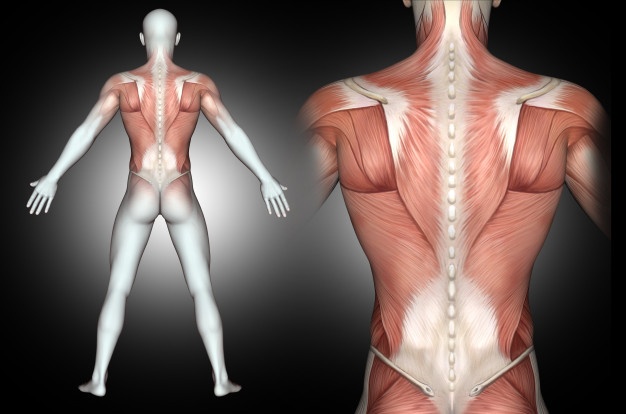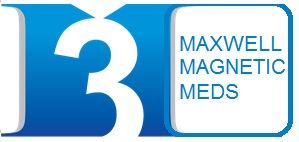Back pain is very common. You’ve probably experienced it for yourself. At some point 85% of adults experience this. The fact is, back pain is the second most common pain ailment, while headaches stand at number one.
The body communicate that something isn’t quite right by sending signals. You need to feel pain in certain situations, to alert you to problems that may become more severe if left untreated. If untreated, back pain, particularly when it becomes chronic, can be very disruptive to your daily routines, work activities, and recreational pursuits.
One of the top reasons for missing work is due to back issues. It is also a leading cause of disability claims and a drain on resources. Americans spend around $50 billion per year on treatments due to back pain – and often these treatments offer only temporary relief, if any at all.
The M3~T Device Pulsed Electromagnetic Field (PEMF) therapy is a safe, non-invasive treatment option for both acute and chronic back pain. Because surgical procedures can cause more harm than good, they should be last resort. PEMF therapy is a non-invasive therapy and therefore should be considered as an early intervention.
ACUTE VS. CHRONIC
Acute back discomfort may appear quickly. It generally resolves in a few days or weeks. Acute back pains is often caused by injury, this acute discomfort serves a purpose. The purpose of this pain is to communicate that you’ve done something your body can’t accommodate, and to signal the brain for repair.
Acute pain is part of a healthy healing process. The injured area responds appropriately by becoming inflamed, thus protecting the area from further damage as you recover.
To prompt this inflammatory response, your body is sending a message to your brain, mostly in the limbic system where emotions live. The emotional response to this pain is intense, but gradually diminishes as healing occurs. The signals that results from this response helps you take the steps you need to heal.
But what happens when healing doesn’t proceed optimally? When inflammation lingers day after day, week after week, the resulting pain can move your limbic system from that initial emotional reaction to a state of constant emotional suffering.
When back conditions lasts for three months or more, it’s known as a chronic condition. Up to 10% of adults dealing with back pain ends up with chronic conditions. Chronic pain is more debilitating than an acute condition, since the impact on daily life is long term. Treatment options often become more expensive, more complicated, less effective and riskier.
Chronic conditions can have a serious impact on quality of life. Anxiety, depression, sleeping and eating disorders, immune suppression and other debilitating health issues can occur when dealing with chronic pain.
The emotional suffering, in particular, can last even when pain intensity is reduced by treatment. Changes in the brain can mean that even minor pain signals are perceived as more severe. Treatments that target the cortical-limbic brain circuit, then, can be critical to controlling chronic pain. That’s why PEMFs for back pain are so effective.

WHAT CAUSES BACK PAIN?
Acute back pain is short-term, lasting anywhere from a few days to a few weeks. It’s typically the result of trauma or a specific disorder such as arthritis. Trauma, such as a sports injury, work accident, or sudden jolt to the body that stresses the spine, can cause symptoms of varying intensity. Muscle aches, stabbing or shooting pain, limited mobility, and limited flexibility are all potential symptoms of this trauma.
Disc problems are another source of back pain, particularly when the disc ruptures (also known as a herniated disc). The pressure that a ruptured disc can put on any one of more than 50 nerves rooted to the spinal cord sends out the pain signal to the brain.
Disc problems aren’t always easy to see, so they can be difficult to diagnose. But under a microscope, tiny changes to discs can be detected. These changes can start early in life, leading to chronic pain and back problems as you age.
Other common causes of back pain include viruses, osteoporosis, congenital abnormalities, natural degeneration of the spine, sciatica, spinal stenosis, and fibromyalgia, among other things. With so many options, the source of back pain isn’t always obvious, but the pain should never be ignored. But treatments can be expensive, ineffective, and sometimes even dangerous.
CONVENTIONAL TREATMENT
Some of the most common treatments for back pain is ice and heat, rest, and medications can be effective for acute pain conditions. Unfortunately, these methods are not as useful for long term management of chronic pain.
Alternative treatments like massage, chiropractic manipulations and acupuncture aren’t always practical as a long-term solutions. This can be quite costly, and often insurance companies will not pay for them. And while these treatment options can temporarily relieve inflammation and pain, they do not heal the underlying condition at the root of the pain.
Doctors can only suggest solutions that they know, and most are taught that the best solutions involve either medication or surgery. But these treatments carry considerable risks. Medication can lead to serious side effects and addiction. Back surgery is invasive and risky. Surgery should only be used as a last resort. Nerve compression is perhaps a condition that may require surgery as a treatment.
When none of those conditions is present, the risks of surgery is larger than the benefits. This includes failed back syndrome. PEMFs are a low cost, non-invasive, convenient and safe method to implement first. Many patients who have used PEMFs for back pain have found that they are better able to tolerate pain. Even when does not fully alleviated the pain. The reduction in back pain with PEMF includes those who have had multiple procedures that offered no relief.
BACK PAIN TREATMENT WITH A PEMF MACHINE
PEMF therapy sends pulsed energy waves to targeted areas of a patient’s body. These waves move through cells in damaged regions stimulating healing in those cells. PEMF therapy can also be used to target pain response centers in the brain, helping to regulate brain function.
PEMF should NOT be confused with other electric therapies, which is sending electricity through the body.
Brain research has shown that PEMFs are safe and effective to use across the brain at all levels of intensity. PEMF machines can be used both in a clinical setting and at home. PEMFs repair tissue in the brain and adjust brain frequency functions, helping calm inflamed and overactive brain function.
PEMF machines can be used to target back pain, whatever the source. Because chronic back pain can occur when the brain receives the wrong signals from nerve cells, targeting the brain with PEMF systems, should almost always be included and can be very effective in treating this pain.
PEMF FOR BACK TREATMENT: WHAT THE RESEARCH SHOWS
I have paid close attention to the research around the effectiveness of PEMF therapy. Many studies have shown that PEMFs are an effective pain management tool.
Two prospective randomized studies found that PEMFS have considerable and significant potential for reducing pain in subjects with lumbar radiculopathy and whiplash syndrome.
A total of 100 patients with lumbar radiculopathy and 92 with whiplash syndrome were studied. Patients with prolapsed intervertebral discs, systemic neurological diseases, epilepsy and pregnancy were excluded. In one group, patients received the standard medications diclofenac and tizanidine and magnetic field treatment twice a day for two weeks. The other group received only medications.
With the magnetic field treatment, patients suffering from lumbar radiculopathy had pain relief and painless walking an average of four days earlier (average 8 days as compared to 12 for the control group).
Patients with whiplash syndrome were assessed for pain on a ten point scale. In patients receiving magnetic field treatment, this dropped at the following average rates: Head, 4.6 to 2.1 after treatment; neck, 6.3 to 1.9; and shoulder/arm 2.4 to 0.8. For those in the control group head pain went from average of 4.2 to 3.5 after treatment; neck pain from 5.3 to 4.6; and shoulder/arm pain from 2.8 to 2.2.
Another randomized controlled clinical trial evaluated the impact of a PEMF system in managing pain caused by discogenic lumbar radiculopathy. In this condition, the nerve root is affected, resulting in pain that can radiate to other areas of the body.
In this study, 40 patients were randomly assigned to either a group that received PEMF therapy or a control group that received placebo treatment. Both groups were assessed at baseline and again three weeks later, using a ten-point visual analogue pain scale (VAS), objective electrical somatosensory evoked potentials (SSEPs), and a questionnaire using a Modified Oswestry Low Back Pain Disability scale (OSW).
The assessments showed significant differences between the groups relative to overall pain. Oswestry Low Back Pain, personal care, lifting, walking, sitting, sleeping, social life and employment all saw improvement. Additionally, objective measures of improvements in tissue related brain sensations could easily be seen in the data. The authors concluded that PEMF therapy is an effective method for the conservative treatment of many forms of back conditions.
FIND RELIEF USING PEMF FOR BACK PAIN
Dr Paul have had some gratifying success using PEMFs for back pain with his patients, especially when they’ve been told there was nothing more that could be done. One patient, who had to drive almost an hour each way to work, had a disc problem that was inoperable. Just getting to work left him in excruciating pain.
He recommended a portable PEMF system where the coils were placed on his lower back. He felt incredible relief during his first treatment in my medical office, and began using it several hours per day. Several weeks later, he told he could drive with almost no pain at all. He could work for hours without significant pain. He had his life back!
It took doctors many years in practice to discover the power of magnetic therapy, but you don’t have to wait that long! I’ve seen results – and you can too.
If you have questions on using PEMFs for back pain, call our office to speak to a member of my team. There’s no need to wait.
References:
- Thuile C and Walzlb, M. Evaluation of electromagnetic fields in the treatment of pain in patients with lumbar radiculopathy or the whiplash syndrome. NeuroRehabilitation 17 (2002) 63-67, 63.
- Omar AS, Awadalla MA, El-Latif MA. Evaluation of pulsed electromagnetic field therapy in the management of patients with discogenic lumbar radiculopathy. Int J Rheum Dis. 2012 Oct;15(5): 101-8.
- Drpauluk.com

